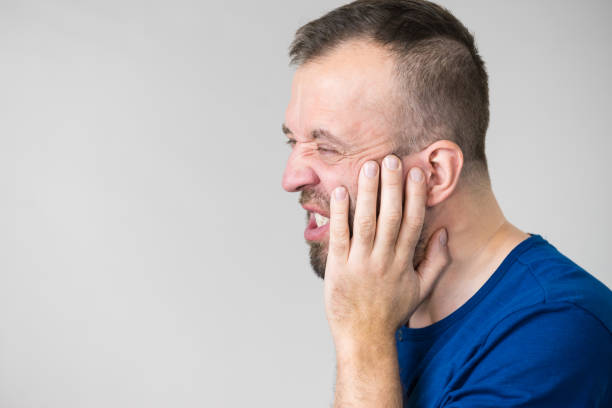Introduction
Experiencing pain in both the ear and jaw on one side can be a discomforting and concerning issue. In this comprehensive guide, we’ll explore the potential causes, symptoms, and effective remedies for ear and jaw pain on one side to help you navigate this common health concern.
Common Causes of Ear and Jaw Pain on One Side
Temporomandibular Joint (TMJ) Disorders
Explaining how issues with the temporomandibular joint, which connects the jawbone to the skull, can lead to pain in both the jaw and ear.
Discussing contributing factors such as teeth grinding and jaw clenching.
Dental Issues
Addressing dental problems, including tooth decay, infections, or impacted wisdom teeth, that may manifest as pain in the jaw and ear.
Highlighting the importance of regular dental check-ups.
Ear Infections
Discuss how infections in the ear, such as otitis media or outer ear infections, can cause pain that radiates to the jaw.
Emphasizing the need for prompt medical attention for ear infections.
Sinusitis
Exploring how sinusitis, inflammation of the sinuses, can lead to referred pain in the jaw and ear.
Discussing common symptoms and treatment options.
Trigeminal Neuralgia
Introducing the possibility of trigeminal neuralgia, a condition affecting the trigeminal nerve, causing severe, shooting pain in the face and jaw.
Discussing triggers and medical interventions.
Symptoms and Diagnosis
Pain Characteristics
Detailing the nature of the pain, such as dull, aching sensations, sharp or shooting pain, to assist in identifying potential causes.
Encouraging individuals to note any additional symptoms.
Professional Diagnosis
Stressing the importance of seeking professional medical and dental evaluation for a precise diagnosis.
Discussing diagnostic procedures, including imaging and physical examinations.
Home Remedies and Self-Care
Warm Compresses
Recommending the use of warm compresses on the affected side to alleviate muscle tension and promote relaxation.
Providing guidance on safe and effective application.
Over-the-Counter Pain Medications
Discussing the use of over-the-counter pain relievers, such as acetaminophen or ibuprofen, to manage mild to moderate pain.
Advising on proper dosage and potential side effects.
Gentle Jaw Exercises
Introducing gentle jaw exercises to improve flexibility and reduce tension.
Providing step-by-step instructions for safe exercises.
Avoiding Trigger Foods
Advising individuals to identify and avoid foods that may exacerbate jaw pain, such as hard or chewy items.
Emphasizing the importance of a soft diet during periods of discomfort.
When to Seek Professional Help
Persistent or Severe Pain
Urging individuals to seek prompt professional evaluation if the pain is persistent, severe, or worsening.
Emphasizing the importance of addressing underlying issues.
Additional Symptoms
Highlighting the significance of seeking medical attention if additional symptoms, such as fever, ear discharge, or changes in hearing, accompany the pain.
Indicating potential complications that may require immediate intervention.
Preventive Measures
Maintaining Oral Health
Stressing the importance of regular dental check-ups and maintaining good oral hygiene to prevent dental issues contributing to ear and jaw pain.
Encouraging the use of mouthguards for teeth grinding.
Sinus Care
Providing tips for sinus care, including staying hydrated, using a humidifier, and managing allergies to prevent sinusitis-related pain.
Advising on proper techniques for nasal irrigation.
Conclusion
In conclusion, ear and jaw pain on one side can arise from various causes, and addressing the underlying issue is essential for effective relief. By understanding the potential causes, recognizing symptoms, and adopting appropriate remedies, individuals can navigate this discomfort with knowledge and proactive care.

